Southeast Asia Travel Narrative Story: St. Matthew's Orphanage Center, Burma (Myanmar)
Story and photography by Ray Waddington.
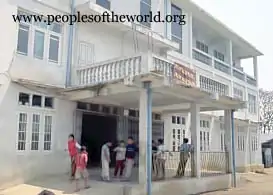 Early in 2005, while researching an upcoming assignment in Burma, I came across an article that briefly mentioned an orphanage
in Pyin Oo Lwin, Mandalay Division. Pyin Oo Lwin is a well-established stop on the independent
travelers' "Road from Mandalay" to Hsipaw and, for the few who continue further east, to Lashio. It is a small town with many attractions for
travelers, including waterfalls, temples, colonial architecture and a botanical garden.
It is about ninety minutes from Mandalay by road (much longer by train). Although it was not a part of the assignment, I
decided I would break my journey for a day in Pyin Oo Lwin and offer to volunteer there. Back then I had assumed
that my connection to this orphanage would end after my day of volunteering. How wrong I was!
Early in 2005, while researching an upcoming assignment in Burma, I came across an article that briefly mentioned an orphanage
in Pyin Oo Lwin, Mandalay Division. Pyin Oo Lwin is a well-established stop on the independent
travelers' "Road from Mandalay" to Hsipaw and, for the few who continue further east, to Lashio. It is a small town with many attractions for
travelers, including waterfalls, temples, colonial architecture and a botanical garden.
It is about ninety minutes from Mandalay by road (much longer by train). Although it was not a part of the assignment, I
decided I would break my journey for a day in Pyin Oo Lwin and offer to volunteer there. Back then I had assumed
that my connection to this orphanage would end after my day of volunteering. How wrong I was!
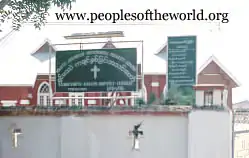 St. Matthew's Orphanage Center is in the center of the town, behind St. Matthew's Kachin Baptist Church.
(A web link at the end of this story marks its location on a map of Pyin Oo Lwin.) The orphanage
was then home to about 80 children, aged around 7 to 17 — although new ones arrived quite frequently. In fact soon
after my visit the facilities became too small to accommodate the increasing number of children who now live there.
Many orphans are still on the waiting list to be admitted. In a country of extreme poverty, and with family members often lost to internal civil conflict,
Burma has its fair share of orphaned children.
St. Matthew's Orphanage Center is in the center of the town, behind St. Matthew's Kachin Baptist Church.
(A web link at the end of this story marks its location on a map of Pyin Oo Lwin.) The orphanage
was then home to about 80 children, aged around 7 to 17 — although new ones arrived quite frequently. In fact soon
after my visit the facilities became too small to accommodate the increasing number of children who now live there.
Many orphans are still on the waiting list to be admitted. In a country of extreme poverty, and with family members often lost to internal civil conflict,
Burma has its fair share of orphaned children.
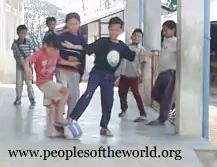 One evening in early March, 2005, after arriving in Pyin
Oo Lwin I went to the orphanage and found the director, the Rev. Philip Zau Awng.
One evening in early March, 2005, after arriving in Pyin
Oo Lwin I went to the orphanage and found the director, the Rev. Philip Zau Awng.
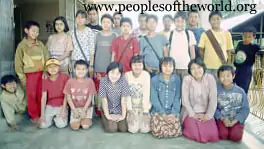 I explained that I had
read about the orphanage and that I was willing to spend the following day teaching or just helping out.
Philip was very grateful and asked me what I could teach. Although I have a teaching
background, my experience had until then been almost entirely with adults. I explained that I did not have any materials
prepared, but that I could teach almost anything at a basic level. We decided that I
would focus on English but also include some French and German at the end. (I had taught English-as-a-Second-Language
before, but never French or German!)
I explained that I had
read about the orphanage and that I was willing to spend the following day teaching or just helping out.
Philip was very grateful and asked me what I could teach. Although I have a teaching
background, my experience had until then been almost entirely with adults. I explained that I did not have any materials
prepared, but that I could teach almost anything at a basic level. We decided that I
would focus on English but also include some French and German at the end. (I had taught English-as-a-Second-Language
before, but never French or German!)
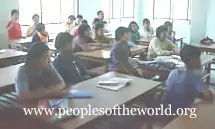 School was out for summer vacation in Burma at this time, so the children would normally have Summer School
classes such as Culture Appreciation.
(Burma is a culturally diverse country and SMOC has children
from many different cultural backgrounds because they come from many of the country's indigenous groups.)
Philip had chosen about 25 children to be in my "class" and when I arrived
the following morning they were already sitting in the classroom waiting for me. I began by introducing
myself and writing my name on the blackboard. Then the students introduced themselves, one-by-one. Most of them appeared
quite shy and spoke very softly when they said their name. Fortunately I knew this was as much a part of their culture
as it was genuine shyness. I dramatically gestured a joke at their shyness, which had them giggling and also had the
intended effect of breaking the ice.
School was out for summer vacation in Burma at this time, so the children would normally have Summer School
classes such as Culture Appreciation.
(Burma is a culturally diverse country and SMOC has children
from many different cultural backgrounds because they come from many of the country's indigenous groups.)
Philip had chosen about 25 children to be in my "class" and when I arrived
the following morning they were already sitting in the classroom waiting for me. I began by introducing
myself and writing my name on the blackboard. Then the students introduced themselves, one-by-one. Most of them appeared
quite shy and spoke very softly when they said their name. Fortunately I knew this was as much a part of their culture
as it was genuine shyness. I dramatically gestured a joke at their shyness, which had them giggling and also had the
intended effect of breaking the ice.
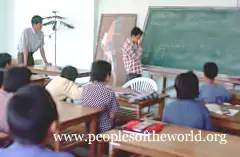 We spent the morning covering some basic English grammar —
verb tenses, questions and tag question formation ("won't you?"
"didn't he?" "hasn't she?" etc.)
— one of the most overlooked aspects of teaching ESL.
As anyone might expect, since the children were of various ages and levels some understood the material
better than others. After lunch (the best Shan noodle soup I ever had in Burma), we covered some very basic French and German.
These are languages that the children very rarely get the chance to hear, let alone learn. I was impressed at how
enthusiastic they were to try to learn things that were clearly very challenging for them.
We spent the morning covering some basic English grammar —
verb tenses, questions and tag question formation ("won't you?"
"didn't he?" "hasn't she?" etc.)
— one of the most overlooked aspects of teaching ESL.
As anyone might expect, since the children were of various ages and levels some understood the material
better than others. After lunch (the best Shan noodle soup I ever had in Burma), we covered some very basic French and German.
These are languages that the children very rarely get the chance to hear, let alone learn. I was impressed at how
enthusiastic they were to try to learn things that were clearly very challenging for them.
By the middle of the afternoon the children were showing signs of information overload. (The day had been very hot and I was also experiencing information overload from inventing the teaching material on the fly!) I called a break and spent it trying to think how to continue with something worthwhile without having the children lose interest. Then I remembered a word game I played as a child — hangman. After I explained the rules and played the first round (which I lost), all prior signs of information overload were replaced by shouts of "me next, please!"
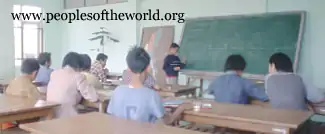
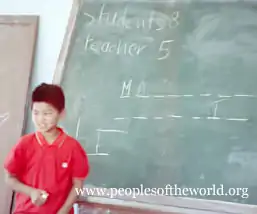 I was invited to spend the evening with the children. They treated me to gospel music, Burmese style. Then they insisted
we play more hangman! During the evening I decided I wanted to spend another day there teaching — I simply wasn't ready to leave yet!
Philip agreed and I went back to my hotel to plan some material for the following day. The lesson ended up lasting
just the morning and being mainly revision of the previous day's material and — guess what — more hangman!
I was invited to spend the evening with the children. They treated me to gospel music, Burmese style. Then they insisted
we play more hangman! During the evening I decided I wanted to spend another day there teaching — I simply wasn't ready to leave yet!
Philip agreed and I went back to my hotel to plan some material for the following day. The lesson ended up lasting
just the morning and being mainly revision of the previous day's material and — guess what — more hangman!
Speaking to Philip at lunch (more Shan noodle soup) I learned that none of the children at the orphanage had ever seen a computer! Although he would like to have computers for the children to learn basic computer literacy, present funding levels precluded that possibility.
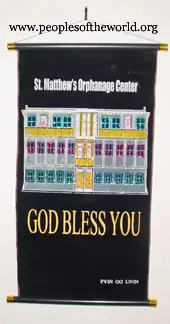 As he told me this, I immediately thought of the first class break we had taken the day before.
Two girls — who
I later learned were the brightest students at the orphanage — had immediately sought me out to ask me "who is your favorite
Harry Potter character?" How ironic, I thought, that these children had never seen a computer but their first question
of their visiting teacher was about Harry Potter!
I decided to give a short lesson after lunch about computers and the Internet, with Philip translating the technical terms
into Burmese.
As he told me this, I immediately thought of the first class break we had taken the day before.
Two girls — who
I later learned were the brightest students at the orphanage — had immediately sought me out to ask me "who is your favorite
Harry Potter character?" How ironic, I thought, that these children had never seen a computer but their first question
of their visiting teacher was about Harry Potter!
I decided to give a short lesson after lunch about computers and the Internet, with Philip translating the technical terms
into Burmese.
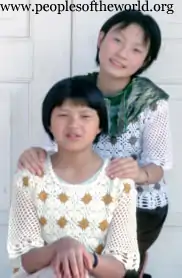 As a graduation (from my "class") present Philip took me and the children on a field trip that afternoon.
As a graduation present of my own I took my two brightest students to the town's only Internet cafe
so that they could see a computer for the first time. I also bought them each a sweater as a graduation present. They were very happy!
As a graduation (from my "class") present Philip took me and the children on a field trip that afternoon.
As a graduation present of my own I took my two brightest students to the town's only Internet cafe
so that they could see a computer for the first time. I also bought them each a sweater as a graduation present. They were very happy!
Then it was time for dinner and to say good-bye. Then — the last thing I expected — it was time for my presents! Philip gave me a cloth banner depicting the orphanage (which I now hang proudly on my wall); the children gave me a pen; and my two brightest students had somehow managed to get toy animals into a box and gift-wrap it! If it hadn't been for the fact that my Burmese visa was about to expire I would have stayed longer and done more teaching. I was very sad to leave and I promised I would return one day.
When I made that promise I didn't expect it to be three more years until my first chance to return. But that chance came in April, 2008 and I grasped it. I began making my travel plans. Then, in early May, 2008 tropical cyclone Nargis struck. Since I didn't know if my visa would be issued I didn't want to inform Philip of my plans only to have him and the children eventually be disappointed. On June 11 my passport came back with the visa stamped inside it. Philip was happy to receive the news and in my mind I was already back at SMOC!

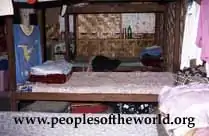 I arrived in Pyin Oo Lwin late one Sunday evening in the middle of July. By the time I'd found a place to stay and had something
to eat it was already too late to go to the orphanage. But early the next morning I was renewing my acquaintance with Philip and
reliving some very happy memories.
I arrived in Pyin Oo Lwin late one Sunday evening in the middle of July. By the time I'd found a place to stay and had something
to eat it was already too late to go to the orphanage. But early the next morning I was renewing my acquaintance with Philip and
reliving some very happy memories.
The first change I noticed from three years earlier was a new building. I learned that this
building comprises living quarters and vocational subject-matter classrooms for the older children.
This first sign of progress had already vindicated our decision to award
 SMOC a grant under our Indigenous Institutional Educational Grants program.
Delivering that grant was a personal reward I'll never forget.
SMOC a grant under our Indigenous Institutional Educational Grants program.
Delivering that grant was a personal reward I'll never forget.
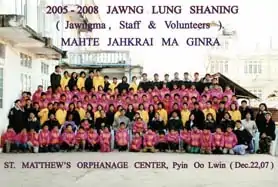 The construction of this building, in 2007, should allow SMOC to care for more children in the future.
As Philip showed me around I saw more signs of progress. SMOC had staff and volunteers three years
earlier but now there were more of them and the range of extra-curricular subjects was wider. And they had better equipment,
like the looms pictured above, to make hands-on vocational teaching more practical and effective.
The construction of this building, in 2007, should allow SMOC to care for more children in the future.
As Philip showed me around I saw more signs of progress. SMOC had staff and volunteers three years
earlier but now there were more of them and the range of extra-curricular subjects was wider. And they had better equipment,
like the looms pictured above, to make hands-on vocational teaching more practical and effective.
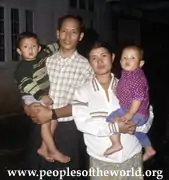 Mid-Monday mornings are set aside for Christian Devotion. Philip invited me to this most personal of gatherings among the staff and
volunteers. I did not hesitate to attend the session as a cultural experience.
When I was offered a hymn book my reaction was to try to explain that I didn't know the
Mid-Monday mornings are set aside for Christian Devotion. Philip invited me to this most personal of gatherings among the staff and
volunteers. I did not hesitate to attend the session as a cultural experience.
When I was offered a hymn book my reaction was to try to explain that I didn't know the
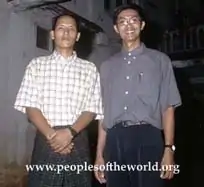 Burmese alphabet but when I opened it
to illustrate my explanation I noticed that the Kachin language is written using the Roman alphabet.
As I sang along phonetically with my new friends in a language I don't even speak I was already
struggling with how difficult it would be to leave this place for the second time.
Burmese alphabet but when I opened it
to illustrate my explanation I noticed that the Kachin language is written using the Roman alphabet.
As I sang along phonetically with my new friends in a language I don't even speak I was already
struggling with how difficult it would be to leave this place for the second time.
After the Devotion I reminded Philip of the noodle soup we'd shared three years earlier. He took my hint and accompanied me to the same place we'd
eaten back then. I was happy to see no progress there and the soup tasted just as good as I'd remembered it.
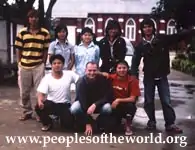 During the lunch he told me about a program that had been inaugurated since my first visit.
The Youth Leadership Development Program is a workshop that
aims to prepare young Burmese men and women for the responsibility to run other organizations like SMOC in the future.
I'd already met some of the young men and women in this program earlier at the morning's Devotion.
During my discussions with them after lunch I was
invited to deliver a Youth Leadership Development workshop the following day.
During the lunch he told me about a program that had been inaugurated since my first visit.
The Youth Leadership Development Program is a workshop that
aims to prepare young Burmese men and women for the responsibility to run other organizations like SMOC in the future.
I'd already met some of the young men and women in this program earlier at the morning's Devotion.
During my discussions with them after lunch I was
invited to deliver a Youth Leadership Development workshop the following day.
I could hear myself from three years earlier saying that I hadn't prepared any teaching material. But this time I didn't feel confident inventing material on the fly so I took my leave for the day and returned to my hotel to begin thinking about what such a workshop might cover. It wasn't long before I had the answer — Child Psychology. It is a field in which I am educated and which I believe anyone working or planning to work with children should study at least at a basic level.
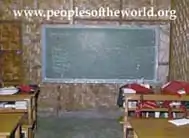 The next morning I arrived early and began transferring my prepared notes to the blackboard in the new building. Then the youth leaders
arrived. One of them was majoring in psychology and so he was very interested in the material. We started with early childhood
development and used losing parents as an example of a traumatic experience. Later we discussed discipline. I asked for two
volunteers to role-play the parts of parent and child, explaining the scenario would be that the child had been caught
cheating on a school test. The young man playing the parent adopted an authoritarian approach. Aware that societal norms on
child discipline differ across cultures I offered an alternate approach in which the "parent" attempt explanation to the "child". When the students
saw this enacted by two female volunteers they and I both felt they had learned something they could put into practice. We broke for the
morning with plans to continue the "workshop" later in the day.
The next morning I arrived early and began transferring my prepared notes to the blackboard in the new building. Then the youth leaders
arrived. One of them was majoring in psychology and so he was very interested in the material. We started with early childhood
development and used losing parents as an example of a traumatic experience. Later we discussed discipline. I asked for two
volunteers to role-play the parts of parent and child, explaining the scenario would be that the child had been caught
cheating on a school test. The young man playing the parent adopted an authoritarian approach. Aware that societal norms on
child discipline differ across cultures I offered an alternate approach in which the "parent" attempt explanation to the "child". When the students
saw this enacted by two female volunteers they and I both felt they had learned something they could put into practice. We broke for the
morning with plans to continue the "workshop" later in the day.
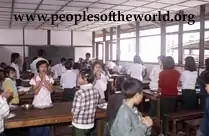 By now it was lunch time and the children were coming back from school.
By now it was lunch time and the children were coming back from school.
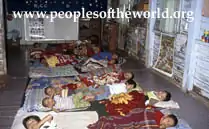 I was pleasantly surprised at how many
faces I
remembered from three years earlier — and how many children remembered me. One boy in particular had started growing into a
fine young man. He is the hangman player, pictured above in the red shirt, from my class of 2005. Now he is a budding violin player and he
agreed to play for me during his music class that evening. A second rewarding discovery that lunch time was to see how much
the SMOC pre-school had grown. This pre-school caters for children of the SMOC staff as well as St. Matthew's Kachin Baptist Church
and local community members.
I was pleasantly surprised at how many
faces I
remembered from three years earlier — and how many children remembered me. One boy in particular had started growing into a
fine young man. He is the hangman player, pictured above in the red shirt, from my class of 2005. Now he is a budding violin player and he
agreed to play for me during his music class that evening. A second rewarding discovery that lunch time was to see how much
the SMOC pre-school had grown. This pre-school caters for children of the SMOC staff as well as St. Matthew's Kachin Baptist Church
and local community members.
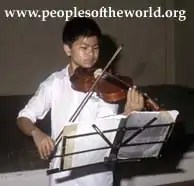 Once again Philip and I shared a noodle soup lunch and discussed his plans for the future. I returned later to conclude the
workshop from earlier in the day. We talked about many topics — from clinical psychology to ancient cultures. I'm not sure if
this was more rewarding for me or for my audience, but we all felt it had been worthwhile.
Once again Philip and I shared a noodle soup lunch and discussed his plans for the future. I returned later to conclude the
workshop from earlier in the day. We talked about many topics — from clinical psychology to ancient cultures. I'm not sure if
this was more rewarding for me or for my audience, but we all felt it had been worthwhile.
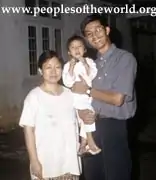 In the early evening the children have their extra-curricular lessons. As he'd promised, the young violin player performed for me.
As Mozart filled the room and my ears I felt strangely proud of this boy who'd once beaten me at hangman and was now demonstrating
with ease a skill I'd failed to master at his age.
In the early evening the children have their extra-curricular lessons. As he'd promised, the young violin player performed for me.
As Mozart filled the room and my ears I felt strangely proud of this boy who'd once beaten me at hangman and was now demonstrating
with ease a skill I'd failed to master at his age.
I ate dinner with Philip and his family and then, all too soon, it was time to say good-bye again. It was just as difficult as it had been the first time.
If you plan to visit this part of Burma please consider volunteering at the orphanage. You will be made very welcome and will have a very rewarding time.
Photography copyright © 1999 -
2025,
Ray Waddington. All rights reserved.
Text copyright © 1999 -
2025,
The Peoples of the World Foundation. All rights reserved.
Waddington, R., (2008) St. Matthew's Orphanage Center, Pyin Oo Lwin, Burma (Myanmar).
The Peoples of the World Foundation. Retrieved
December 18, 2025,
from The Peoples of the World Foundation.
<https://www.peoplesoftheworld.org/travelStory.jsp?travelStory=smoc>
If you enjoyed reading this travel story, please consider buying us a coffee to help us cover the cost of hosting our web site. Please click on the link or scan the QR code. Thanks!


